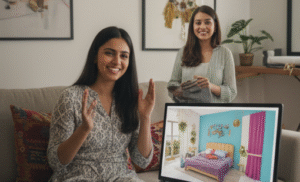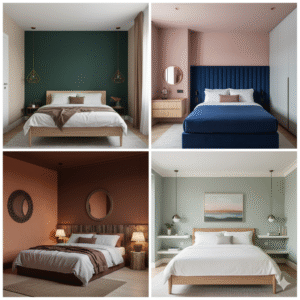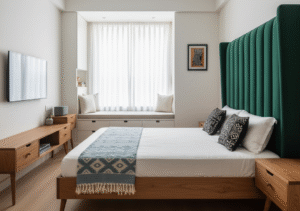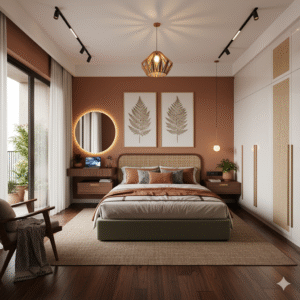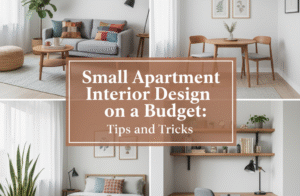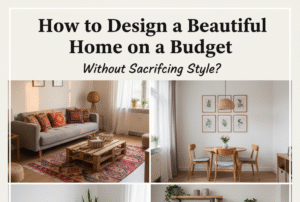“I want my home to look Pinterest-worthy, but hiring a designer feels expensive. Can I do it on my own?”
If you’ve had this thought, you’re not alone. Many Indian homeowners try to plan their home interiors without a designer, armed with mood boards, Instagram saves, and late-night YouTube DIY tutorials.
Aditi, a young professional in Mumbai who recently moved into her first 1BHK. She wanted a stylish yet budget-friendly home, but every time she shopped for furniture or looked at wall paint samples, she felt stuck.
“Am I choosing the right sofa? Should I go for neutral walls or add a bold accent color?”
By following a step-by-step interior planning approach, she transformed her blank apartment into a cozy space full of character, all without a designer.
So, if you’re wondering, “Can I learn interior designing at home?” or “What are the 7 basics of interior design?”
This guide will help you start smart.
Can I really plan interiors without a designer?
Yes, you can. While a designer brings expertise, taste, and efficiency, many homeowners can plan functional and beautiful homes themselves by following the fundamentals of interior design.
The trick lies in:
- Understanding your needs and lifestyle
- Following basic design principles
- Prioritizing budget and functionality over trends
- Being patient with the process
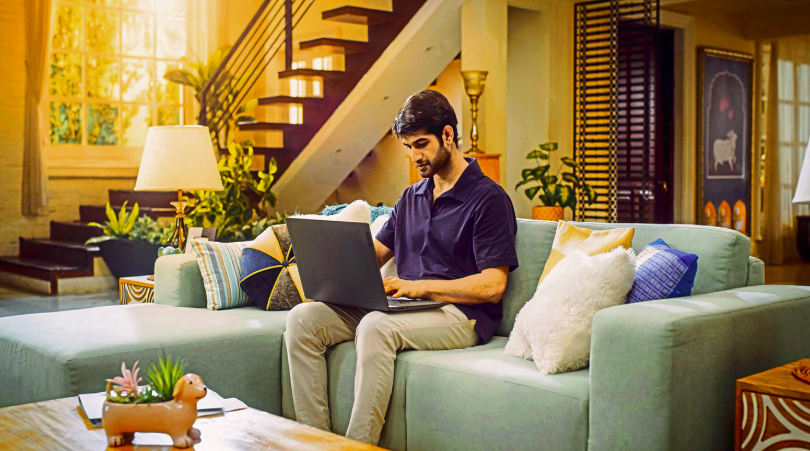
What are the 7 basics of interior design I should know?
Whether or not you hire a designer, these seven principles guide every good interior:
- Space – Don’t overcrowd; balance empty and filled areas.
- Line – Horizontal lines add calm, vertical lines create height.
- Form – Mix shapes (rectangular sofa with round coffee table).
- Light – Natural and artificial light both matter.
- Color – Choose a palette that matches your mood and climate.
- Texture – Combine smooth, rough, soft, and shiny finishes.
- Pattern – Stripes, florals, or geometrics add interest when used carefully.
Think of it as cooking a perfect biryani, you need the right balance of spices, aroma, and texture. Similarly, interiors shine when all these elements come together.
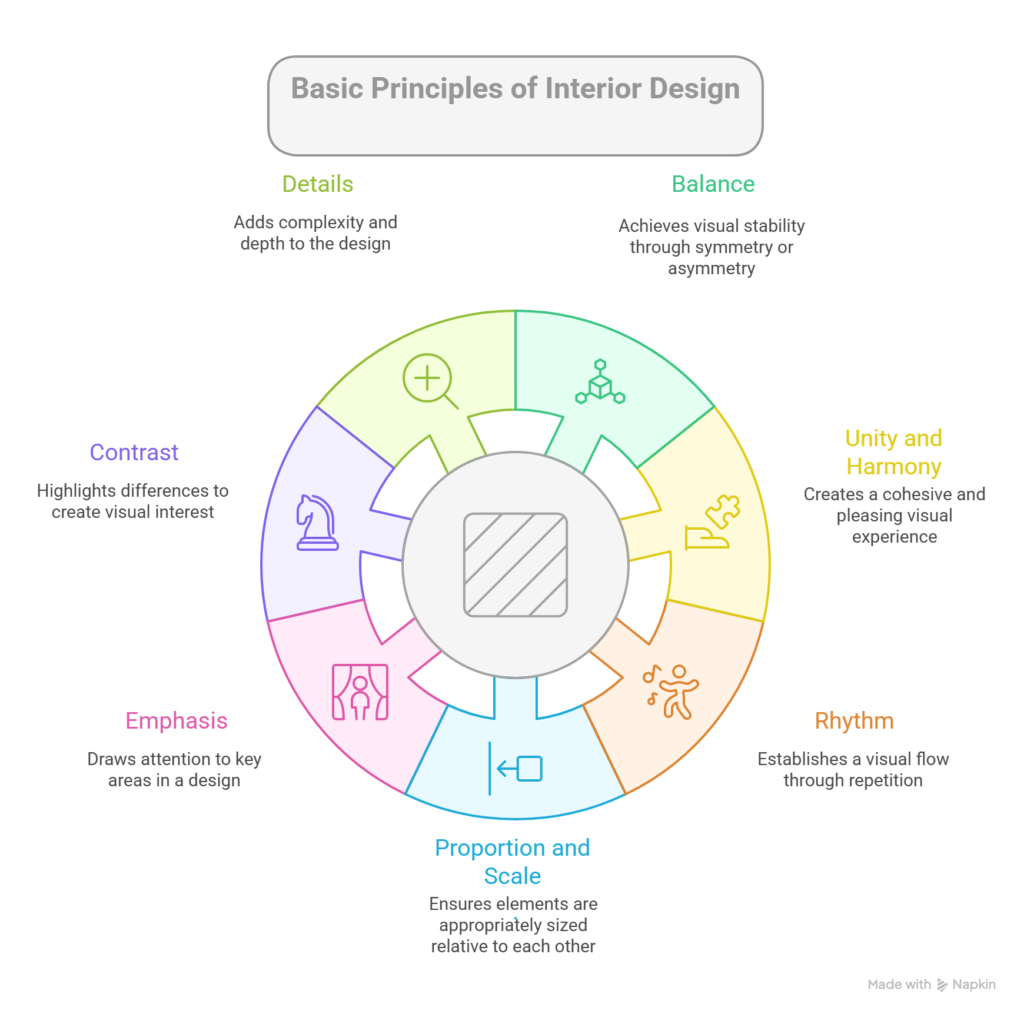
How much does it cost to learn interior design in India?
If you want to go deeper, courses are available. Short-term online interior design courses in India can cost anywhere between 20,000 and 60,000 INR, while full-time diplomas and degrees in design colleges may range from 2 to 6 lakhs.
But if your goal is just to design your own home, you don’t need a professional degree. Free YouTube tutorials, blogs, and inspiration boards are more than enough to get started.
Which course is best for interior design in India for beginners?
For homeowners who just want practical skills, online certificate programs are great. Look at courses by institutes like:
- NID (National Institute of Design) short-term workshops.
- INIFD’s online learning modules.
- Udemy or Coursera beginner-friendly courses.
These won’t make you a professional designer overnight, but they will give you a structured understanding of styles, layouts, and color combinations.
Practical tips to plan your home interiors yourself
Here’s a roadmap if you’re designing without a pro:
- Define your style
- Are you into modern minimalism, traditional Indian aesthetics, or bohemian charm?
- Create a Pinterest board to spot patterns in what you like.
- Are you into modern minimalism, traditional Indian aesthetics, or bohemian charm?
- Budget smartly
- Allocate funds to kitchen, wardrobes, furniture, and decor in that order.
- Always keep 10-15% aside for last-minute splurges.
- Allocate funds to kitchen, wardrobes, furniture, and decor in that order.
- Start with color
- Light colors make small Indian flats look bigger.
- Warm tones add coziness to living rooms, while blues and greens work well in bedrooms.
- Light colors make small Indian flats look bigger.
- Furniture first, decor later
- Invest in a good sofa, dining set, and bed. Curtains, rugs, and lamps can come later.
- Invest in a good sofa, dining set, and bed. Curtains, rugs, and lamps can come later.
- Use Vaastu where relevant
- Place the bed headboard in the southwest.
- Keep the puja corner in the northeast.
- Use warm lighting in the living area for positive vibes.
- Place the bed headboard in the southwest.
- Regional inspiration
- Add Rajasthani block prints to your cushions.
- Use brass accents for a South Indian touch.
- Incorporate cane and terracotta for a rooted, earthy Maharashtrian vibe.
- Add Rajasthani block prints to your cushions.
- Don’t forget lighting and greenery
- A mix of ambient lights, task lights, and accent lights is key.
- Indoor plants like money plants or snake plants bring freshness and balance.
- A mix of ambient lights, task lights, and accent lights is key.
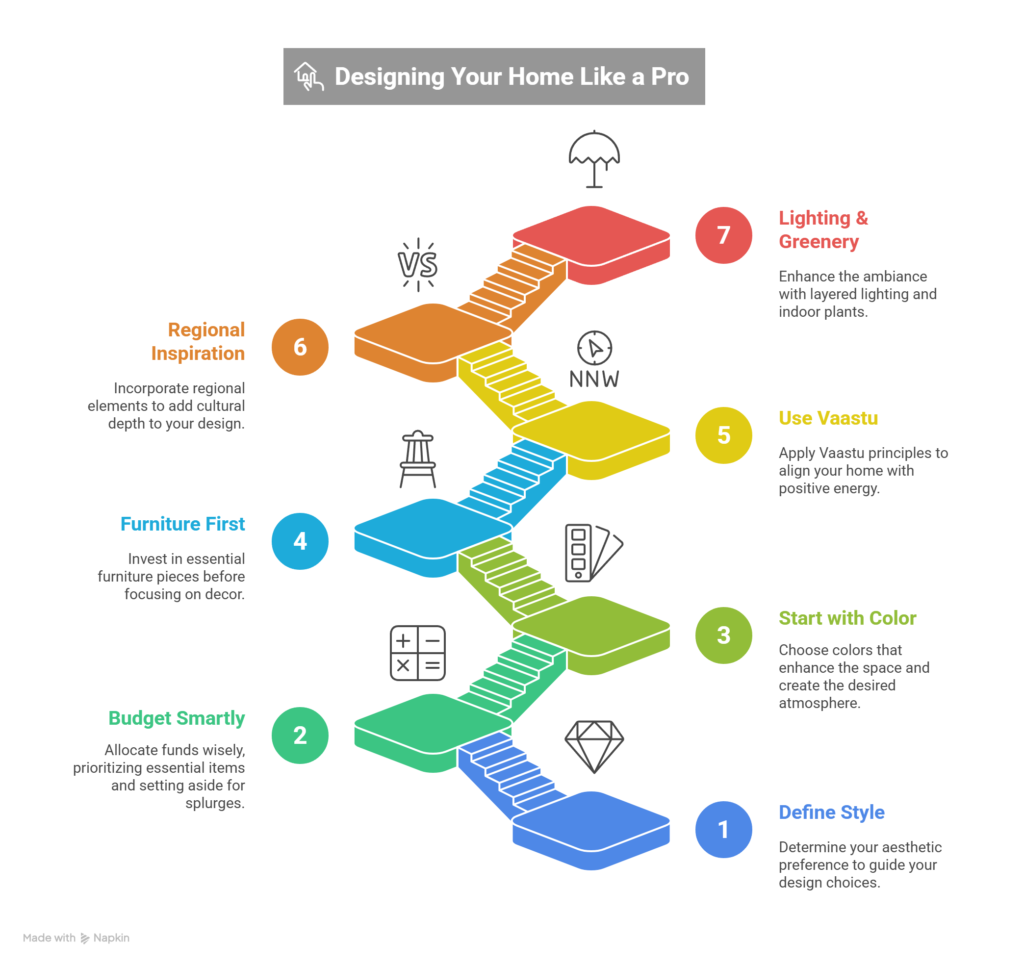
FAQs on planning interiors without a designer
Q. Can I learn interior designing at home?
A. Yes. With free resources, online courses, and practical trial-and-error, you can design your own home interiors.
Q. What is the biggest mistake to avoid when designing without a professional?
A. Copy-pasting random Pinterest looks without considering your own space, lifestyle, and budget.
Q. How long will it take to complete interiors on my own?
A. Anywhere from 2 to 6 months, depending on how hands-on you are and how quickly you source furniture and materials.
Q. Do I really save money by not hiring a designer?
A. You save design fees, but you may overspend if you don’t plan carefully. A designer often saves money by avoiding costly mistakes.
Final Word
Designing your home interiors without a professional is doable, but it requires planning, patience, and a bit of design sense. It’s like cooking your favorite dish at home. You may not be a Michelin-star chef, but with the right recipe and a dash of creativity, it can still taste amazing.
If at any point you feel overwhelmed, remember that Behomly is just a call away. Whether you need a one-room design package, a quick consultation, or full-fledged interiors, we’re here to make sure your home feels uniquely yours.

Ready to take the next step?
- Book a quick call with Behomly’s team.
- Explore our One Room Package for a stress-free makeover.
- And don’t forget to grab your Free Guide to kickstart your design journey!

